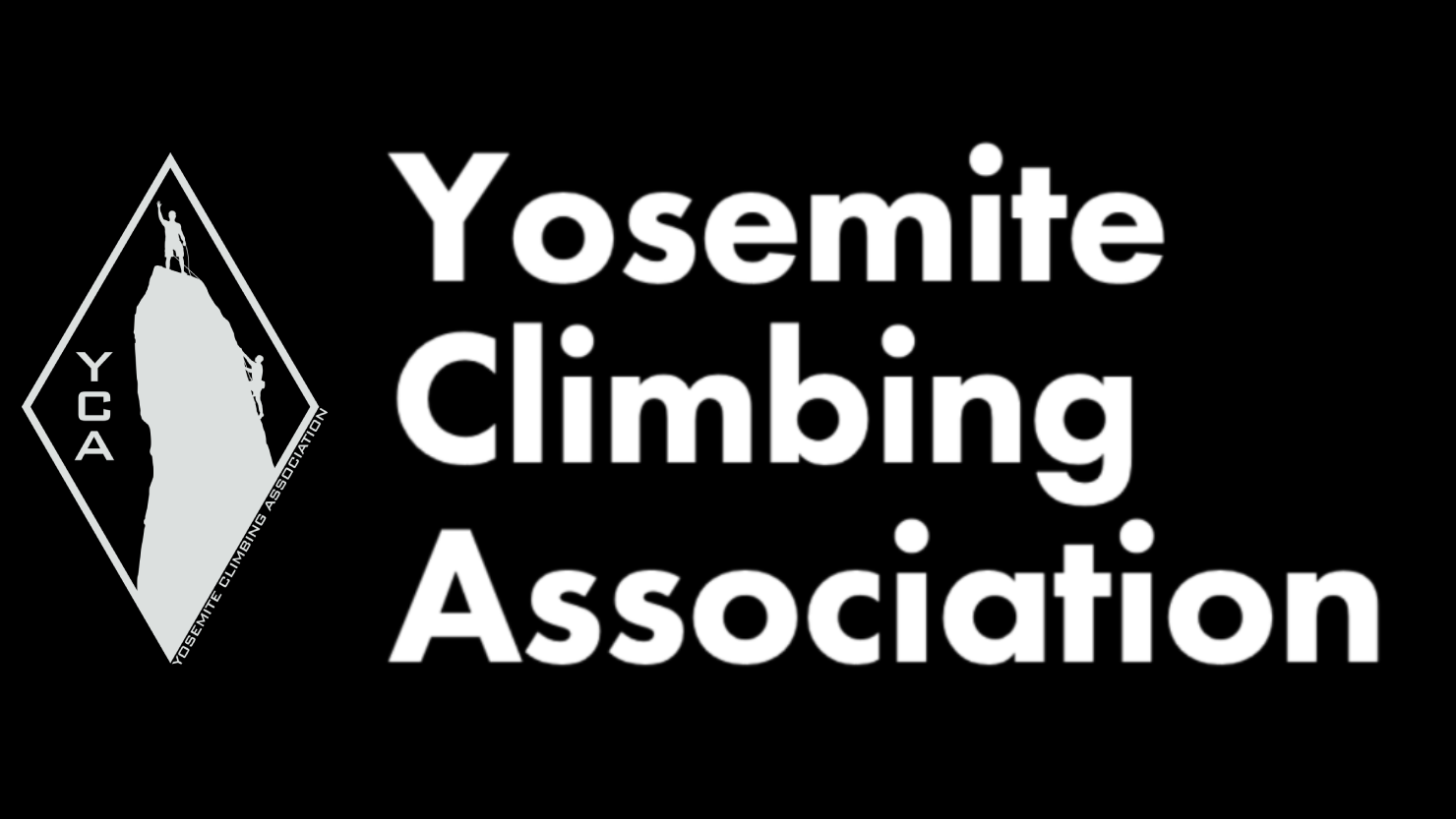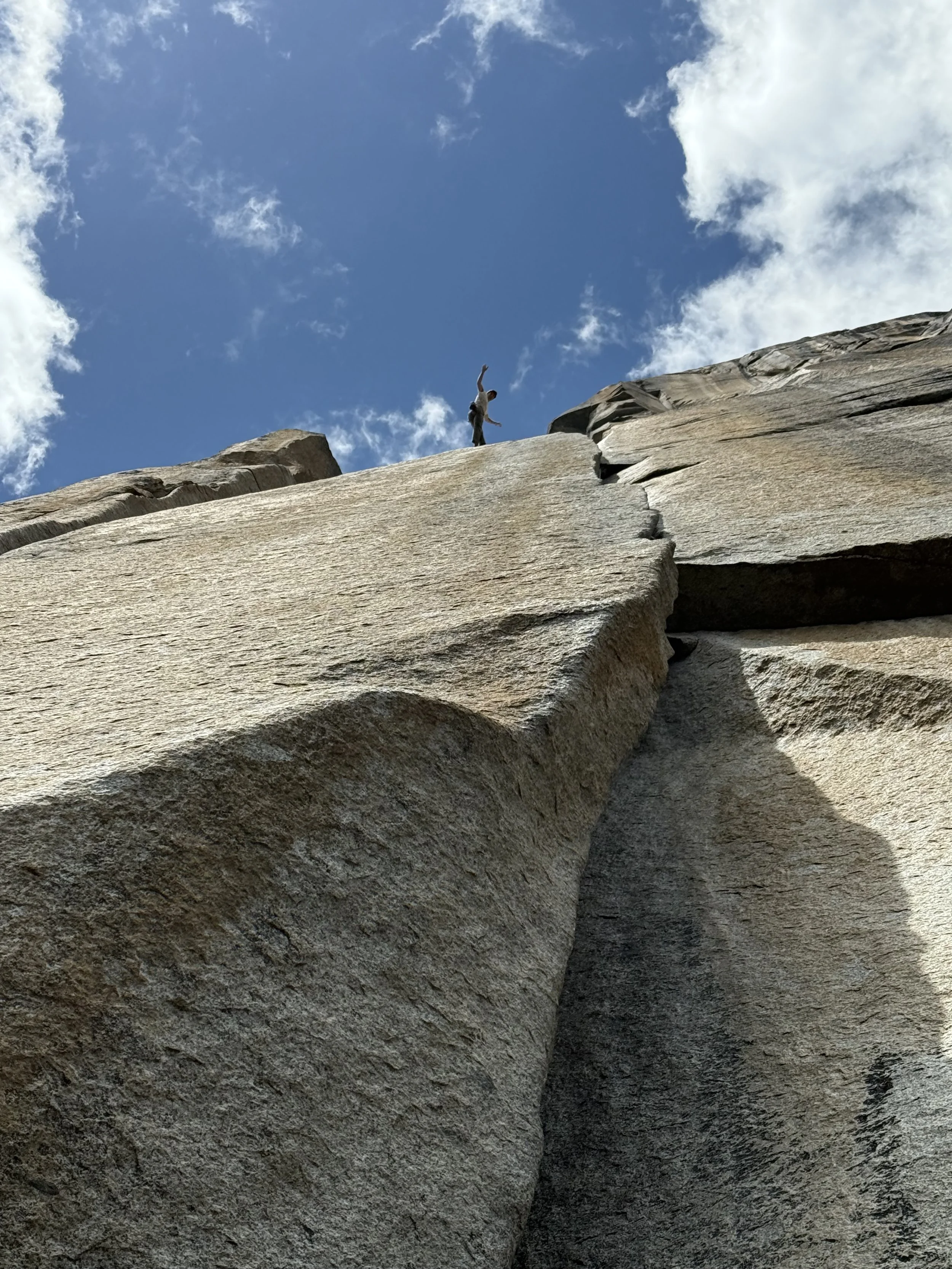EDITION 13 - JUNE 3, 2025
Your window into the stories, history, and ongoing work to preserve Yosemite’s climbing legacy.
A Note from the Editor
Temps are already pushing the 90s here in the Sierra foothills, and the forecast calls for 95°F tomorrow (May 31). A New York Times heat-wave brief on May 29 warned that “…in Yosemite Valley, temperatures are expected to climb into the high 90s and could touch 100 degrees.” Similar numbers are showing up in regional forecasts.
On the traffic front, longtime Valley local Chris Falkenstein posted to the Yosemite Incident Facebook page (May 29) that the NPS sign shop is restriping worn crosswalks from May 28 through June, with 30-minute (or longer) delays likely at spots such as Sentinel Bridge and the Curry Three-Way intersection.
In other news, in a story updated May 30, Gregory Thomas of the San Francisco Chronicle reads: “New Yosemite rule bans flags on El Capitan following high-profile political stunts.”
A new regulation at Yosemite National Park explicitly prohibits hanging flags and banners from wilderness areas — a designation that includes the famous granite cliff of El Capitan, where at least three politically minded flag displays have occurred in the past year.
On the film front, former YCA managing director Allyson Gunsallus has recently launched a free-to-watch YouTube series, “Hand Holds: Climbing after Parenthood,” on the channel @WellspringClimbers. The seven-episode series explores the challenges of parenting while climbing; Episode 7—“Becca & Tommy Caldwell: From a Family of Three to Four”—drops June 15.
Counting Lurking Fear Ascents
This week, I caught up with Jordan Cannon to talk about his recent original Salathé Wall free ascent, speed tactics on El Cap, and the fine print behind “free-ascent math.”
I’d written that Pietro Vidi did the third free ascent of Lurking Fear—figuring Beth Rodden + Tommy Caldwell = two, so Vidi = three. Headlines in UKClimbing and elsewhere called it the second. Jordan set me straight: the first free ascent counts as one, no matter how many climbers are on the first ascent/free route. So, Vidi’s repeat is officially the second ascent.
Climbing.com also reports that Vidi found 5.14-ish climbing on Pitch 2 and rated Pitch 7 5.13c/d— “The flakes are so tiny they just break… beta-intensive and very, very technical.”
For my part, belaying Yuji Hirayama on the route some 20 years ago, I recall him calling Pitch 2 5.14 and describing a dyno there. He was unable to free the route.
Quick Note on Alex Huber’s Current Posts
Before we dive into Jordan Cannon’s feature Salathé Wall story—and because Alex Huber has been posting daily about his own second free ascent of the route—here’s what he’s sharing:
The Monster Offwidth just below El Cap Spire was the first important bypass to the original line of Royal Robbins, Tom Frost and Chuck Pratt.
But another tricky section came soon afterwards, just below the Block. With the help of my friend Mark Chapman, I discovered and established a new variation. Mark baptized it as the Huber Pitch, which later on became the famous crux section of the Free Rider. Only then the road to the iconic headwall was open for me.
There were still some pitches left to be climbed, and these were not easy but obviously possible to be climbed free. Like the amazing Endurance Corner - stemming and liebacking at its best.
Chris Van Leuven
Editor, Yosemite Climbing Association News Brief
YosemiteClimbing.Org
Mark Hudon and Jordan Cannon on top of El Cap. Photo: Jordan Cannon
Jordan Cannon’s Noteworthy Ascent and the Free-Climbing History of the Salathé Wall
As I wrote in the YCA newsletter a short while ago, Jordan Cannon, with support from Mark Hudon, freed El Cap’s Salathé Wall this spring. Cannon posted on Instagram:
“I followed the tradition of climbing in Yosemite—sticking to the original free line, avoiding hanging belays, and striving for the best ascent I possibly could, leading every pitch over six days with only two falls.”
When Cannon became one of only a handful of climbers to free Pitch 19 in May, he unlocked a sequence that had baffled top climbers since the route’s first free ascent in 1988.
1988 • Skinner & Piana
In the American Alpine Journal (AAJ), Paul Piana described Pitch 19 during the first free ascent with the late Todd Skinner:
“About 700 feet above Heart Ledges, we encountered the first of the really difficult pitches… Searing fingertip pin-scars, laser-precise edging, and post-doctoral body English made up the last twenty feet.”
He concluded, “Unless a team is willing to put in a comparable amount of work, the Salathé Wall will not be climbed again as a free route.”
1995 • Alex Huber, with support from the late Mark Chapman
After making the second free ascent (and first individual ascent), Alexander Huber wrote in AAJ in a story titled Freeing the Salathé, The Greatest Rock Climbing in the World:
“I used two variations: a long offwidth that avoids the hard pitch above the Ear [Skinner’s 5.13b, now Pitch 19], and a 5.13a traverse between El Cap Spire and the Block to bypass a wet crux.”
Huber’s pitch 19 variation became the now-famous “Monster Offwidth” that is also part of Freerider.
This week, he posted archival images on Instagram, saying:
“This bypass proved very important for the free ascent, and… over the years, it became one of the most characteristic free-climbing pitches on El Capitan.”
2025 • Cannon’s ascent
On freeing the original Salathé Wall, Cannon told me last week, “It’s a dream come true… a long time in the making— a career-high for sure.”
In addition to eliminating hanging belays wherever possible, he did the original 5.12c Glowacz traverse, freed Pitch 19, and climbed the 5.12d Teflon Corner (Huber’s traverse avoids it). He tried—but this time missed—linking the three 5.13 Headwall pitches. “I was striving for the fullest ascent I could,” he says.
Cannon’s Timeline on the Salathé
2017 • Freerider ground-up in 4 days (a variation of the Salathé Wall that avoids all but one 5.13a pitch)
2018 • Belayed the late Brad Gobright on a one-day Salathé free ascent (Gobright bypassed Pitch 19)
2022 • Got inspired after Connor Herson redpointed Pitch 19. Connor’s dad, Jim, freed Pitch 19 in 2003.
2025 • Dedicated a month to working the 35 pitch 5.13c route; led every pitch free over six days
He says of Pitch 19: “It really boils down to the last 15 feet—six to ten moves of tips laybacking between two-finger pin scars. It’s hard, but I don’t think it deserves the reputation it’s been given; it’s not so hard that it’s not worth trying.”
Pitch 19 (≈40 m)
“Burly” 5.10 fists through a roof to a no-hands rest
Finger laybacks on two-finger scars to another rest
Sustained 5.12 finger-locks
A short 5.13c crux to finish
Back to our call this May. Jordan broke down the moves on all the cruxes and his strategy to link the 5.13 headwall pitches, which he wasn’t able to complete for a variety of reasons (conditions and other parties on the route).
At the end of the call, he added one more thing: “Although I’ve now sent the route, my time on the Salathé is just starting—I still want the full line in a single day.”
A few days after our call, I reached out to him for fact-checking and got a reply that he was busy:
“Sorry, I’m climbing the Salathé! Prepping for triple El Cap link-up before the end of the season. Hopefully it doesn’t get too hot!!”
Cannon on pitch 19 on the Salathé Wall. Photo: Courtesy of Cannon
PHOTO OF
THE WEEK
Belayer’s perspective on Astroman. Climber: Matt Cornell. Photo: Chris Van Leuven
Start planning your 2025 Yosemite climbing trip!
Learn everything you need to know about climbing in the park - from permit information to safety videos and tips from the Yosemite Conservancy!
Stay up to date on the latest climbing closures in effect!
Get your permits, do your research, and hit the wall!
Visit the Yosemite Climbing Museum!
The Yosemite Climbing Museum chronicles the evolution of modern day rock climbing from 1869 to the present.





